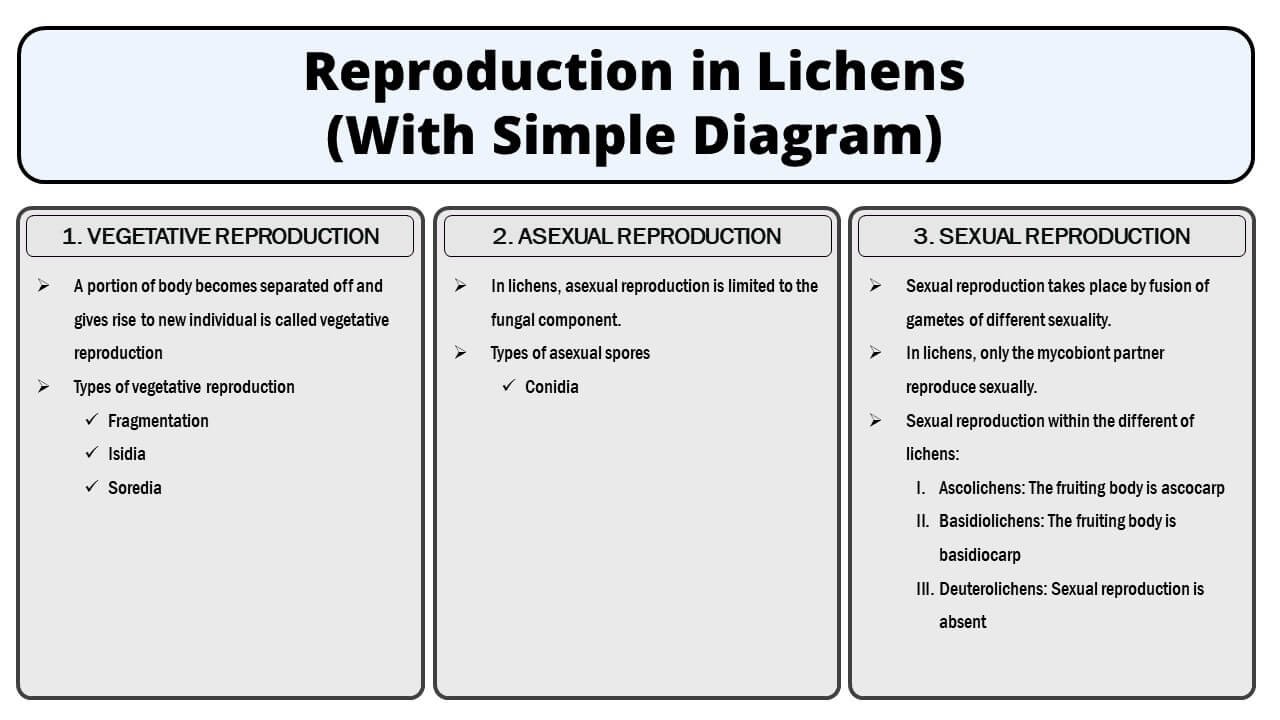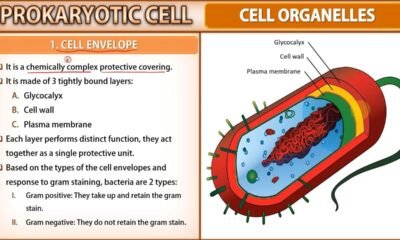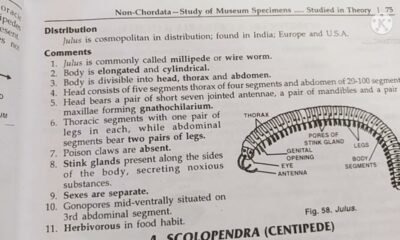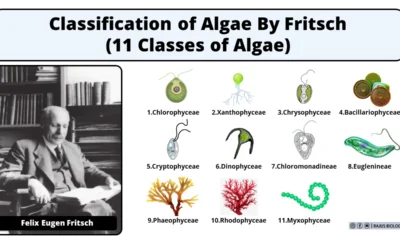Blog
Reproduction in Lichens (With Simple Diagram) | Lichenology

In this article we will discuss about reproduction in lichens:- vegetative reproduction in lichens, asexual reproduction in lichens and sexual reproduction in lichens
Reproduction in Lichens
The lichens can reproduce in three methods: vegetative, asexual and sexual reproduction.
1. Vegetative Reproduction in Lichens
Vegetative reproduction in lichens takes place by following methods:-
A. Fragmentation
The thallus break into smaller pieces and each fragments will give rise to new thallus.
These new thallus are genetically identical to the parent.
This method is very common in pendant thalli.
E.g., Ramalina reticulata.
B. Isidia
Isidia are small, branched, spiny and elongated outgrowths from the thallus
They contains both algal and fungal cells and covered by cortical layer.
When detached, each isidium has the potential to grow into a new thallus under suitable conditions.
E.g., Peltigera
C. Soredia
Soredia are tiny, powdery granules or bud-like outgrowths typically found on the upper surface or edges of the thalli.
Each soredium consists of few algal cells covered by fungal hyphae.
When soredia detach from the thallus, they are dispersed by wind.
On favourable condition, they germinate and form a new thallus
E.g., Parmedia
2. Asexual Reproduction in Lichens
In lichens, asexual reproduction is limited to the fungal component.
Conidia
The fungal partner produces flask-shaped cavities known as pycnidia
These pycnidia have a narrow opening called an ostiole.
Within this the pycnidium, elongated hyphae known as pycnidiophores are formed.
Tip of the pycnidiophores are produce chains of non-motile, single-celled conidia.
Due to their lightweight and dry nature, these conidia are easily dispersed by wind
Under favourable condition, conidia germinate and produce hyphae.
E.g., Peltigera, Roccella
3. Sexual Reproduction in Lichens
- In lichens, Only the mycobiont partner reproduce sexually.
- The male reproductive structure is called spermogonium, while the female structure is known as the carpogonium.
The Male Sex organs (Spermogonium)
- Spermogonia form within flask-shaped cavities located on the upper surface of the thallus.
- These cavities open to the outside through a small pore known as an ostiole.
- Numerous hyphae arise from the cavity walls, with some being sterile and others fertile.
- The fertile hyphae generate non-motile male gametes called spermatia.
- These spermatia are released in a slimy mass through the ostiole.
The female sex organs (carpogonium)
- The carpogonium develops from hyphae situated deep within the algal layer.
- It consists of two parts: the upper, straight part known as the trichogyne and the lower, coiled part called oogonium.
- The oogonium is located deep within the medullary region of the thallus.
- The terminal part of the trichogyne end with an elongated cell that extends beyond the thallus surface and features a gelatinous cell wall.Fertilization
- The spermatium released from the spermogonium, adheres to the sticky protruding part of the trichogyne.
- Following the dissolution of the common wall, the nucleus of the spermatium migrates into the carpogonium, where it fuses with the female nucleus.
- This fertilization process leads to the development of fruiting bodies
- The type of fruiting body is determined by the fungus associated with the lichen.
- The fungal partner can be either ascomycetes or basidiomycetes.
Ascholichens
- Numerous ascogenous hyphae emerge from the basal region of the fertilized oogonium.
- The diploid nucleus undergoes meiotic division, resulting in the formation of eight haploid ascospores and asci.
- The hymenium consists of asci and paraphyses.
- In Ascholichens, the fruiting body may be either apothecia or peritheciaI. Apothecium
- It is cup-like structure and have a layer of fertile tissues called hymenium or thecium.
- The hymenium is composed of sterile, hair-like hyphae called paraphyses, which are interspersed among sac like asci that contain the ascospores.
- Typically, each ascus contain eight ascospores.
- The asci are freely exposed out side at maturity.
II. Perithecium
- Perithecia are typically flask-shaped reproductive structures.
- They appear as small black dots on the surface of lichen.
- At maturity, a small opening at the apex known as an ostiole, facilitates the release of ascospores.
- Once the ascospores are liberated from the ascus, they germinate in a suitable environment and leading to the formation of new hyphae.Basidiolichens
- Following fertilization, the diploid nucleus undergoes meiosis, resulting in the formation of four haploid nuclei.
- Each haploid nucleus migrates into a small projection called a sterigma, which protrudes from the basidium.
- A cell wall develops around each haploid nucleus, resulting in the formation of a basidiospore.
- These basidiospores are released from the sterigmata and are dispersed by wind or other means.
- When a basidiospore lands in a suitable environment, it germinates and giving rise to a new hypha.
Deuterolichens- They are commonly called as lichen imperfectii
- In this lichens, their fungal partners belonging to the Deuteromycotina division of fungi.
- Sexual reproduction is absent in this group of lichens.Conclusion
- Ascolichens: This is the most common lichen, they have sac-like reproductive structures known as asci (ascocarps), which produce ascospores.
- Basidiolichens: This type lichen has club-shaped reproductive structures known as basidia (basidiocarps), it is responsible for the production of basidiospores.
- Deuteromycetes: This group lichens lack sexual reproduction and primarily reproduce through conidia.

 Blog6 months ago
Blog6 months ago[PPT] Human Reproduction Class 12 Notes

 Blog6 months ago
Blog6 months agoCell The Unit of Life Complete Notes | Class 11 & NEET Free Notes
- Blog6 months ago
Contribution of Indian Phycologists (4 Famous Algologist)
- Blog6 months ago
PG TRB Botany Study Material PDF Free Download

 Blog6 months ago
Blog6 months ago[PPT] The living world Class 11 Notes

 Blog6 months ago
Blog6 months agoJulus General Characteristics | Free Biology Notes

 Blog6 months ago
Blog6 months agoClassification of Algae By Fritsch (11 Classes of Algae)

 Entertainment6 months ago
Entertainment6 months agoIbomma Bappam: Redefines Telugu Streaming Trend














